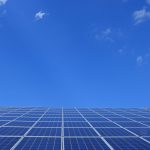Surety Bond Professionals is a family owned and operated bonding agency with over 30 years of experience. With access to a broad range of surety markets, our expert agents are ready to assist with all of your solar bonding needs.
Why Is a Decommissioning Plan Needed?
In most jurisdictions, a project owner applying for a permit to construct a solar generating facility must provide a decommissioning plan. Without a decommissioning plan, these jurisdictions will not issue a permit in the first place.
Decommissioning a solar generating facility includes dismantling the equipment and returning the site to its original condition, may involve tasks including:
- Removing rack wiring
- Removing panels
- Dismantling racks
- Removing electrical equipment
- Breaking up and removing concrete pads or ballasts
- Removing racks
- Removing cables
- Removing ground screws and power poles
- Removing fencing
- Transporting materials from the site
- Grading the site
- Seeding/replanting disturbed areas
There are costs associated with these tasks.
What Does a Decommissioning Plan Include?
A decommissioning plan typically is developed by, or at least reviewed by, a qualified engineer and includes such information as:
- The anticipated useful life of the solar generating facility to be constructed
- The estimated cost of decommissioning in terms of present value
- Details regarding how the cost of decommissioning was calculated, including decommissioning costs and salvage value projections
- The steps in the physical decommissioning process
- The financial security to be provided to cover the cost of decommissioning the facility
Most jurisdictions also will require that a decommissioning plan address or include:
- Periodic updating of decommissioning costs and salvage value projections
- Periodic adjustment of the required financial security amount based on the updated decommissioning costs and salvage value projections
- How the jurisdiction will be protected against changes in market values
- Specific conditions that will trigger the decommissioning process
Why Is Some Form of Financial Security Required?
The main concern is that the owner of the solar generating facility will fail to decommission the facility when it is no longer operational. (The useful life of a solar generating facility generally is estimated to be 25 years.) In the unlikely event that the owner does not decommission the facility as required, the county or other jurisdiction will take over that process; the financial security ensures that funds will be available to cover the cost of decommissioning.
The secondary concern is that the owner of the solar facility may abandon the site throughout the useful life of the solar array, leaving the obligee with the obligation of decommissioning the site.
What Materials from a Solar Site Have Salvage Value?
The most valuable materials salvaged during decommissioning of a solar generating facility are steel, copper, and silicon. These materials have increased in salvage value over the years and have well-established recycling markets. It’s fairly common for the salvage value and the facility’s decommissioning cost to be of similar values.
Is Salvage Value Always Taken into Account?
Not all jurisdictions specifically recognize or allow for the salvage value of the site materials in the calculation of decommissioning costs and the determination of the required financial security amount. When salvage value is disallowed or allowed at less than 100%, it’s usually because of concerns about fluctuating market prices for salvaged materials or changes in technology that can change the net cost of decommissioning a solar generating facility.
The most reasonable approach, one that protects both the project owner and the jurisdiction, is to disallow only a certain percentage of salvage value (for example, 15-20%), while increasing the net decommissioning cost commensurately.
What About a Solar Decommissioning Bond?
To ensure that the funds will be available to cover the cost of decommissioning if it becomes necessary for the permitting jurisdiction to take responsibility for carrying out the decommissioning process, project owners typically are required to provide a surety bond, cash security, letter of credit, or other form of financial security.
While letters of credit are commonly used in the construction industry, the banks that issue them usually require collateral in the form of cash or negotiable securities and charge a percentage of the LOC amount as their fee for issuing an LOC. The only option that does not tie up the project owner’s cash or other assets for the useful life of the solar generating facility is a surety bond.
With a surety bond, the payment of valid claims is guaranteed by a third party, so the cost of decommissioning the facility is covered, with or without the cooperation of the facility’s owner.
With the proper financial security in place, the jurisdiction is protected against having to bear the cost if the project owner defaults on the obligation to decommission a solar generating facility when the time comes, or abandons the site at any point during the duration of its’ useful life.
Get A Quote
Our surety bond professionals will get you the decommission bond you need at a competitive rate.





